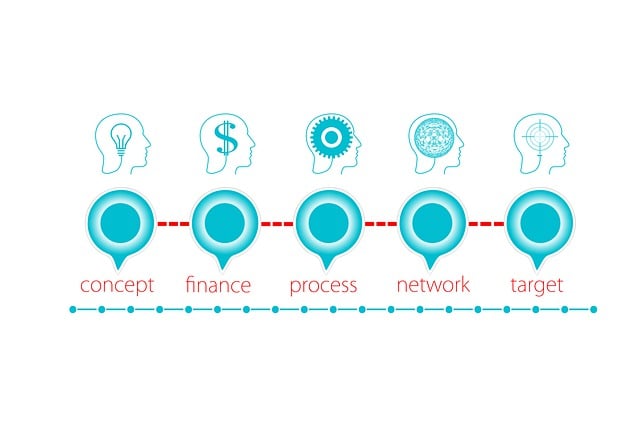Semaglutide, a cutting-edge glucagon-like peptide-1 (GLP-1) receptor agonist, offers significant advantages in managing type 2 diabetes through lowering blood glucose levels, promoting weight loss, and reducing cardiovascular risks. Its versatility allows for effective use as monotherapy or combination treatment. Evolving delivery methods, including inhaled semaglutide and automated injection devices, enhance convenience and efficacy. Personalized medicine approaches, leveraging advanced technologies and research, optimize dosing regimens tailored to individual needs. Integrating lifestyle modifications synergistically improves outcomes. Clinical trials highlight semaglutide's transformative potential, leading to regulatory approval. However, side effects like nausea and close monitoring are crucial, with regular assessments for long-term safety. Future advancements include sustained-release formulations, expanded therapeutic scope, and AI/machine learning algorithms for personalized strategies. Patient education, support, and accessible resources are essential for successful management. While globally accessible in developed countries, challenges in low- and middle-income nations hinder access, prompting international efforts to bridge disparities.
Semaglutide, a groundbreaking medication, has transformed diabetes management, offering improved glycemic control and weight loss benefits. This article explores advancements in semaglutide treatment approaches, delving into its evolving delivery methods, personalized protocols, and combination therapies with lifestyle modifications. We analyze clinical trials showcasing success stories, address safety concerns, and discuss future research directions. Additionally, we examine patient education, global access, and the impact of these innovative semaglutide treatment plans on diabetes care worldwide.
Unlocking the Potential: Semaglutide's Role in Diabetes Management

Semaglutide, a novel glucagon-like peptide-1 (GLP-1) receptor agonist, has emerged as a powerful tool in diabetes management. By mimicking the effects of natural GLP-1 hormones, semaglutide treatment plans offer significant advantages for patients with type 2 diabetes. Its ability to lower blood glucose levels, promote weight loss, and reduce cardiovascular risks makes it a promising option in personalized diabetes care.
The potential of semaglutide lies not only in its efficacy but also in the versatility it brings to treatment approaches. Clinical trials have demonstrated its effectiveness in improving glycemic control when used as monotherapy or in combination with other medications. Furthermore, semaglutide’s impact on weight management has opened new avenues for addressing the comorbidities often associated with diabetes, thus enhancing overall patient well-being and quality of life.
Evolution of Semaglutide Delivery Methods

The evolution of semaglutide delivery methods has been a game-changer in diabetes management, offering more convenient and effective treatment options for patients. Traditional injections have given way to innovative, user-friendly alternatives. Inhaled semaglutide, for instance, presents a promising new route of administration, providing potential relief from the daily injection burden while maintaining similar therapeutic effects. This shift towards less invasive delivery systems not only improves patient adherence but also enhances quality of life.
Additionally, advancements in technology have led to the development of automated injection devices and smart pumps that can deliver semaglutide based on personalized, customizable treatment plans. These devices offer precise dosing, reduce the risk of errors, and provide real-time data monitoring, allowing healthcare professionals to tailor semaglutide treatment plans to individual patient needs more effectively. Such innovations continue to shape the future of diabetes care, promising improved outcomes and an enhanced patient experience.
Personalized Semaglutide Treatment Protocols

In recent years, a shift towards personalized medicine has greatly impacted the way we approach semaglutide treatment protocols. This involves tailoring treatments to an individual’s unique genetic makeup and specific health needs. By taking into account factors such as age, weight, medical history, and lifestyle, healthcare professionals can design highly customized semaglutide treatment plans. Such a personalized approach allows for more effective management of conditions like type 2 diabetes and obesity, leading to improved patient outcomes and quality of life.
Personalized semaglutide treatment plans leverage advanced technologies and ongoing research to optimize dosing regimens. This includes flexible injection schedules, different formulations, and combinations with other medications. These innovations cater to the diverse requirements of patients, ensuring that treatments are both safe and maximally beneficial. As a result, personalized protocols have emerged as a game-changer in healthcare, offering hope for better diabetes management and potentially revolutionizing semaglutide therapy.
Combining Semaglutide with Lifestyle Modifications

The effectiveness of semaglutide treatment plans can be significantly enhanced by integrating lifestyle modifications. This includes adopting a balanced diet, engaging in regular physical activity, and maintaining a healthy weight. These changes work synergistically with semaglutide to improve insulin sensitivity, reduce blood sugar levels, and prevent diabetes complications. By combining medication with lifestyle interventions, patients can achieve better glycemic control and experience improved overall health outcomes.
Healthcare providers often recommend personalized lifestyle plans tailored to individual needs. This might involve setting realistic goals for diet and exercise, providing educational resources, and offering ongoing support. Such comprehensive semaglutide treatment approaches not only help manage diabetes but also promote long-term wellness, ensuring patients lead more active and satisfying lives.
Clinical Trials: Success Stories of Semaglutide Therapy

Clinical trials have played a pivotal role in showcasing the potential of semaglutide as a game-changer in various medical scenarios. These studies have revealed remarkable success stories, particularly in the management of type 2 diabetes and weight management. The results from well-designed, randomised controlled trials have provided robust evidence for the efficacy and safety of semaglutide treatment plans.
In many cases, patients experienced significant improvements in glycaemic control, with some trials reporting up to a 50% reduction in HbA1c levels. Moreover, semaglutide has demonstrated remarkable effects on weight loss, leading to substantial reductions in body weight and waist circumference. These clinical trial outcomes have not only paved the way for semaglutide’s approval by regulatory bodies but also offer promising prospects for future research and personalisation of treatment plans.
Addressing Side Effects and Safety Considerations

Semaglutide, a glucagon-like peptide-1 (GLP-1) receptor agonist, has shown remarkable efficacy in managing type 2 diabetes and promoting weight loss. However, like any medication, it is not without its side effects. Nausea, vomiting, diarrhea, and abdominal pain are common during the initial stages of treatment. These gastrointestinal symptoms often subside as the body adjusts to the drug. Careful monitoring by healthcare professionals during this period is crucial to ensure patient comfort and adherence to semaglutide treatment plans.
Safety considerations extend beyond initial side effects. Long-term use requires regular blood testing to monitor kidney function, thyroid health, and potential bone density changes. The risk of hypoglycemia, while generally low with semaglutide, should be kept in mind, especially when combined with other diabetes medications. Moreover, the impact on cardiovascular health is an area of ongoing research, emphasizing the importance of comprehensive patient assessments before and during semaglutide treatment plans.
Future Directions: Research and Innovation in Semaglutide Treatment

As research continues to advance, the future of semaglutide treatment plans holds immense promise. Scientists are exploring novel delivery methods, such as sustained-release formulations and even oral administration, aiming to enhance patient convenience and adherence. Additionally, ongoing studies focus on expanding the therapeutic potential of semaglutide beyond type 2 diabetes, investigating its role in managing other metabolic disorders like obesity and cardiovascular diseases.
Innovation in this field also includes the development of personalized treatment strategies, utilizing genetic profiles and individual health data to optimize semaglutide dosage and regimen. The integration of artificial intelligence and machine learning algorithms promises to revolutionize drug discovery, enabling more accurate predictions of patient responses and facilitating tailored interventions. These future directions underscore the potential for semaglutide to transform diabetes management and improve overall healthcare outcomes.
Patient Education and Support for Long-term Compliance

Patient education and support are vital components for ensuring long-term compliance with semaglutide treatment plans. Educating patients about the medication’s benefits, action mechanisms, and potential side effects is crucial in fostering trust and enabling them to actively participate in their care. Healthcare providers should take time to explain the importance of consistent dosing and address any concerns or misconceptions that may arise. This comprehensive approach helps patients feel empowered and more likely to adhere to their treatment regimens.
Additionally, implementing support systems can significantly enhance compliance. Regular follow-up appointments, along with accessible resources like hotlines or online communities, allow patients to seek guidance and share experiences. Such initiatives create a sense of community, encourage open communication, and provide a safe space for addressing challenges related to semaglutide therapy. By integrating patient education and support into standard care protocols, healthcare professionals can optimistically manage long-term treatment adherence and improve overall patient outcomes.
Global Perspectives on Semaglutide Availability and Access

Semaglutide, a novel glucagon-like peptide-1 (GLP-1) receptor agonist, has garnered global attention for its potential in revolutionizing diabetes management. However, access to semaglutide treatment plans varies significantly across different countries. In many developed nations, semaglutide is widely available through prescription, offering patients an additional tool in their diabetes control arsenal. This accessibility is driven by robust healthcare systems and favorable regulatory frameworks that recognize the drug’s effectiveness in reducing HbA1c levels and promoting weight loss.
In contrast, low- and middle-income countries face challenges in adopting semaglutide due to limited healthcare infrastructure, higher treatment costs, and varying insurance coverage policies. These factors can hinder patient access, creating disparities in diabetes care globally. To bridge this gap, international collaborations and initiatives are underway to improve semaglutide availability, ensure equitable access, and ultimately benefit millions of people living with diabetes worldwide.
